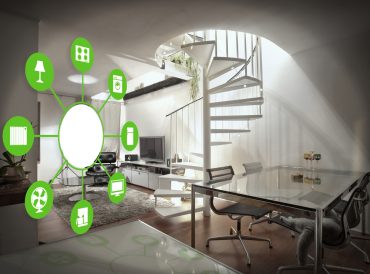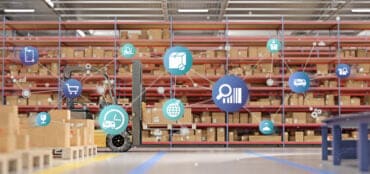
Retailer use of edge computing can enhance customer experience. As such, it is one of the best ways to get customers back to shopping in stores again.
The retail business industry was disrupted because of the emergence of online shopping. In fact, studies show that 67% of millennials and 56% of gen-Xers prefer to shop online. With the newly discovered ease in online shopping, a lot of consumers jump into online shopping experiences. This is why retail businesses should revamp their business structure if they want to be able to keep up with the changing times. If the retail industry is up for the challenge, they need to shift to a scalable, flexible, and secure IT infrastructure.
See also: Retailers Need To Be Creative To Survive Coronavirus Pandemic
Now, the retail business sees the opportunity from the growing Internet of Things (IoT) revolution. IoT is the connectivity of various arrays of devices to the internet. Because of this, there is plentiful data derived from the connectivity. This data can now help retail businesses better their offering and streamline their customer service. This can then translate to winning back customers to shop in brick-and-mortar stores. Here is where edge computing comes in. But what is edge computing?
What is edge computing?
Edge computing is a computing process done in the same place or nearest to the source of the data. One of the most beneficial features of edge computing is the minimized latency as opposed to cloud computing. Imagine if you are sending a message and the receiver is half-way around the world. The time your message needs to travel to the receiver and the time the answer goes back to you is longer than if the receiver is physically nearer to you. The time-lapsed to send and receive the signal is latency.
In effect, data from IoT devices can be quickly collected through edge computing infrastructure. This technology is what retailer businesses saw to optimize and bring value to customers and their businesses as well. Retailers can easily implement an inventory management system to include labeling, pricing, and procurement using edge computing. Let’s take a look at the features of edge computing that can bring retail businesses to come back to life.
Why Retail Industry Needs to Utilize Edge Computing
It boosts operational efficiency
Managing a retail business can be tedious because it is composed of several moving parts. Traditional retail businesses make use of purpose-exclusive applications as solutions to retail operations like inventory management, pricing, and scanning. These are non-flexible systems that are not able to keep up with the dynamic nature of the retail industry. Adopting edge computing can do wonders in retailing.
With edge computing, retailers can maximize the use of IoT devices and the massive data it can transmit in real-time. More so, edge computing can power artificial intelligence (AI) and machine learning technologies to increase the efficiency of their operational processes.
Because of IoT devices, edge computing can communicate with customers’ own devices. Customers can already create their shopping list anywhere. When they visit the retail store, they can find out how to pick-up the items in their shopping list efficiently and in the shortest possible time. Retailers can also position sensors around the store to detect foot traffic so they can manage the space more efficiently based on how customers go around.
Have you heard of a check-out-less store? This is what Amazon Go has done in its retail store through the power of edge technology. Customers download the app, use the app to enter the store, take whatever they need, and walk out. This translates to no long lines, no waiting, and no cashier. Their personnel man the restocking, ID checkers in the liquor aisle, and those who answer customers’ questions. This is a classic example of how edge computing can be used to maximize the efficiency of retail store operations.
It provides a unique customer experience
Aside from operations, retail businesses can use edge computing to offer customers a unique experience when they go to the brick-and-mortar-store. Imagine yourself in a traditional garment store where you have to get up, dress-up, go around, pick an item, go to checkout before you can leave the store.
Next, imagine searching for the garment you are looking for in your mobile phone, pick what you want, choose the size, go to checkout to pay, and wait for it to arrive. Sounds much easier and convenient if you look into ecommerce, right?

But what if you can make your retail store convenient? Additionally, what if it’s more fun to shop in the store? Data derived from IoT devices can help retailers craft unique customer experiences. Let’s say you have already searched for a garment online using your mobile phone. You decided to go to a store just to cross-reference the price.
Edge computers can communicate with your mobile phone to know what you are looking for, and the retails store can automatically offer the garment at a promotional price. Additionally, garment stores can put-up augmented reality (AR) mirrors so you can “try-on” a garment without actually putting it on. You can change the color, try another size, and check stock availability. You can also check other available items that you might like.
You see, with connectivity and data, retail stores can make shopping a better experience for their customers. It can help retailers provide stellar customer service. Real-time data exchange is important to be able to provide features that can bring value to customers. Remember, emotions are involved when customers shop. As retail stores provide a happy and convenient place to shop, shoppers will be encouraged to visit the stores and even give them a great online review.
It helps in determining customer trends
In addition to the unique customer experience, edge computing can help in determining customer trends. In the same way, data from IoT can help personalize customer interactions. It can also help map out purchasing patterns, which can help down the line with internal processes such as warehouse management.
In this manner, edge computing protocols will no longer be reactive. Instead of just being a tool for solving issues, the technology can now be used to strategize on how the business can drive conversion. Data coming from online and in-store usage can provide an insight into purchasing decision drivers or upcoming trends. More so, retailers can consider the trends based on the season, not just with marketing but also with procurement.
Retail businesses can plan ahead with the help of data to look at purchasing trends. The data can be used to craft marketing strategies. They can execute personalized email marketing that can stimulate customers’ interest and push for more conversions. Based on studies, you can expect an average of $42 in return for every dollar spent to market through email.
But consumers are already aware of email marketing strategies, so marketers should not just send generic emails expecting it to catch attention. Email marketing best practices should involve a balance between generalizations and individuality. Generalizations can be made in designing marketing campaigns. However, each interaction with a customer should be individually crafted
It promotes security and compliance
For retail stores to provide the best products and services, they make use of the IoT and the computing power of the edge. However, interconnectivity also presents some security risks. If a customer would like to have the best shopping experience in your retails store, they would have to connect their device into the network. Or, the retail store can have their own gadgets and hands them to the customers when they visit the shop.
Nevertheless, both scenarios are security risks. This means consumers can gain access to data from your IT infrastructure. That is why data security is of the utmost importance when implementing edge computing. The good thing is since edge computing entails an infrastructure that is near the source, you can easily establish, maintain, and monitor security measures to mitigate the risks of interconnectivity. Each device connected to the network can pose as a vulnerability to the whole. To better manage this security threat, security on each connected device should be optimized. Also, the edge computing infrastructure itself should have layers of security measures to protect consumer and retailer data.
On the other hand, some retailers also install smart security cameras connected to the edge computer for faster and real-time security monitoring. There are countless ways for edge computing to help retailers manage security in their enterprise.
Conclusion
Retailers can maximize the use of edge computing in providing the best experience for their customers. As such, edge computing is one of the best ways to enhance their business and get customers back to shopping in retail stores. As customers feel convenience, efficient shopping, secured facility, and fun experience while they are in a retail store, it will not be far that they come shopping back in-store again.
The interconnectivity of online shopping applications and in-store devices through the help of edge computing can help revitalize retail shopping once again. With the advent of different computing solutions, we may see more advancement in technology and how they are being used. The initiative to use the technology to give consumers the best experience sets the bar on how other enterprises should follow through.





























